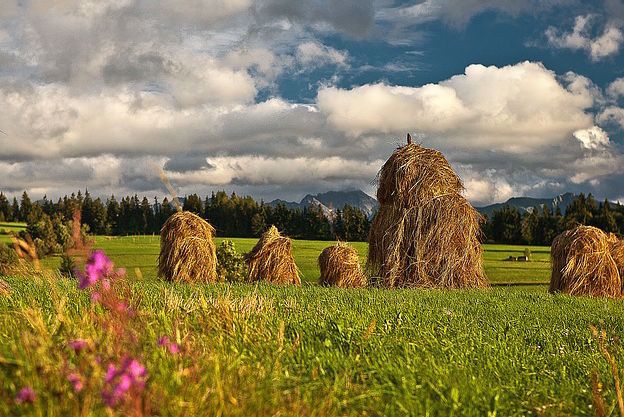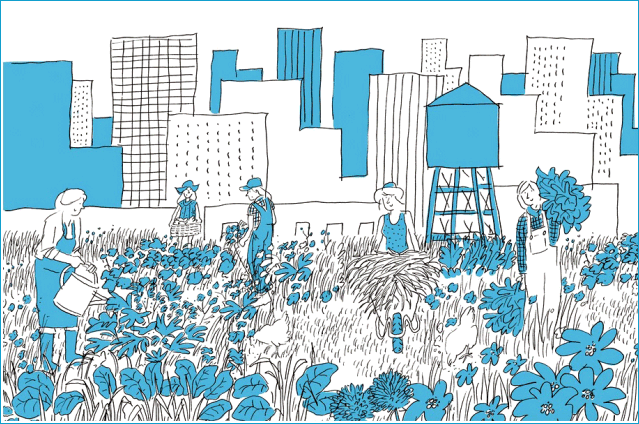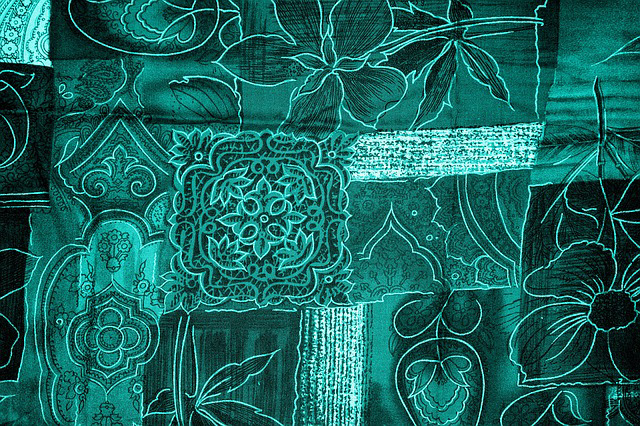|
“Localisation stands, at best, at the limits of practical possibility, but it has the decisive argument in its favour that there will be no alternative.”
~David Fleming (1940 – 2010),
a British economist, cultural historian, and environmental writer |
|
Gmail may clip the displayed part of the publication. To enjoy the full issue, click on the “view entire message” link at the bottom of this message or select the “view this email in your browser” option at the top. |
|
|
|
You Are What You Eat was written by Australia’s Formidable Vegetable to mark the International Year of Soils (2015), and it was celebrated by the United Nations as the official song of soil. According to Vandana Shiva, an Indian scholar, environmental activist, food sovereignty advocate, and anti-globalization critic, the work of the band, which self-identifies as permaculture electro funk-swing for the new normal, “connects the creativity of nature with the creativity of music.” |
|
|
|
|
By Gunnar Rundgren (Garden Earth, 4/18/20)
Animal factory farming, endless monocultures, a carpet of chemicals, dramatic loss of biodiversity, obesity, malnutrition, food waste, appalling working conditions for migrant laborers and undermined livelihoods of small farmers and pastoralists. The list of failures of the modern food system is long. Are they caused by evil multinationals, by ignorant farmers and food industries or by consumers shopping for the cheapest? Is the root cause lack of technology? Is there even a root cause?
|
|
|
|
|
 |
|
By Robert Jensen (MarionWest, 1/4/21)
At the core of this analysis is a claim that, at first glance, may seem to be a stretch: The erosion of human dignity in our broken world starts with the erosion of the planet’s soils. But there is no way to deal with the fractures within the human family without understanding the human family’s break with the ecosphere. We live in a world in which people and other living things are broken by routine exploitation and violence. Entire societies seem broken beyond repair. Life itself seems to be in danger of breaking forever. Acknowledging this is difficult not only because of the depth of the pain in a broken world but because we know that much of the pain is avoidable. To be human—in any place at any time—is to deal with inevitable disappointment, despair, and death. But most of the suffering of this broken world is generated by the political and economic systems we have built. To face that—to know that we broke the world and that it could be different—is hard.
|
|
|
|
|
|
By Paulo Petersen (Agroecology Now!, 10/3/20)
Agroecology has been defined based on three interdependent dimensions: as a practice, as a scientific approach and as a social movement. As a social practice, it is expressed in the various ways in which peasant family farming and indigenous and traditional peoples and communities organize their work for the diversified production of food and other agricultural products. This is accomplished through cooperative processes developed in close interaction with ecological and socio-cultural dynamics of the territories in which they take root. By using systemic and participatory approaches, agroecology articulates frontier knowledge based on different scientific disciplines combined with popular biocultural knowledge.
|
|
|
|
|
 |
|
By John Thackara (FOEN-commissioned report, 10/21/20)
As we change the way we inhabit and restore our ecosystems, a variety of different actors and stakeholders need to work together – often, for the first time. The exploration of a territory’s social and biological assets can involve a range of skills and capabilities: the geographer’s knowledge of territory; the biologist’s expertise in habitats; the ecologist’s literacy in ecosystems. In the civic ecology movement, millions of citizens are active in tree planting, watershed regeneration, sustainable urban drainage; daylighting rivers, blue-green corridors, litter clean-up, and pollinator pathways. This upsurge of enthusiasm has prompted municipalities to add other items to their plans. Cemeteries, watercourses, and avenues are seen as sites of potential biodiversity. So, too, are roadside verges, green roofs, and facades. Sports fields, vacant lots, abandoned sites, empty malls and landfills are being assessed as for their biodiversity potential.
|
|
|
|
|
|
By 10+ Indigenous Leaders (Green Dreamer, 1/1/21)
Regenerative agriculture and permaculture claim to be the solutions to our ecological crises. While they both borrow practices from indigenous cultures, critically, they leave out our worldviews and continue the pattern of erasing our history and contributions to the modern world. Indigenous cultures view the Earth as a communion of beings and not objects. While the practices ʻsustainable farming’ promote are important, they do not encompass the deep cultural and relational changes needed to realize our collective healing.
|
|
|
|
|
|
By Steward Yerton (Honolulu Civil Beat, 1/14/21)
“ADC has not become the entity the Legislature envisioned – one that would develop an agriculture industry to stand as a pillar of the state economy...,” the audit said. “After nearly 30 years, the economic void created when plantations ceased production remains mostly unfilled.” In recent years, the Legislature has appropriated more than a quarter of $1 billion to the ADC, including about $23.4 million for operations and $238 million for capital investments. But it has been difficult at times for lawmakers to determine where that money had gone and how well the corporation had been fulfilling its duties.
|
|
|
|
|
|
By Agrarian Trust (2020-21)
Agriculture is in a crisis. Land is being consolidated and transferred out of the hands of small farmers, giving way to more industrial-scale operations that pollute rivers, erode the soil, degrade ecosystems, emit greenhouse gas, and contribute to income inequality. Because of escalating land market values, next-generation farmers who want to farm sustainably cannot afford to access land, or must take on so much debt to do so that they are pressured out of sustainable agricultural practices. The Agrarian Commons is an innovative and transformative land-holding model committed to shaping a just, resilient, healthy food system and farm economy for the communities it serves. With 400 million acres of land in the U.S. expected to change hands over the next two decades, the time for transformation in land ownership is now.
|
|
|
|
|
|
By the Hawai‘i ‘Ulu Cooperative (All year round)
Over the past 100 years, ‘ulu and many of Hawai‘i’s other heritage crops have taken a back seat to imported, highly processed factory foods, which has had negative impacts on our local economy and community health. With revived interest in indigenous rights and local, national, and global food systems in recent decades, traditional Hawaiian crops are garnering attention and momentum. The Hawai‘i ‘Ulu Cooperative was formed to share knowledge about this remarkable fruit and make it easier for island residents and visitors to find, cook with, and enjoy ‘ulu year-round.
|
|
|
|
|
 |
|
By Simon Fairlie (The Land Magazine, February 2020)
In the USA, 98% of all garments are now imported, compared with just five percent in 1965. Production of polyester, which is used in 60% of garments today, consumes 350 million barrels of oil a year and is responsible for three times as many CO2 emissions as cotton production. Rayon, made from wood pulp, is imported into the USA, even though its manufacture is so toxic that has been banned by the EPA. Microfibres are shed when plastic clothes are laundered and find their way into rivers, oceans and marine wildlife.
Fibershed, a book by Californian textile specialist Rebecca Burgess, is a welcome plea for a movement to relocalize textile production, similar to that which has revived demand for local foods over the last 20 years. A fibreshed is a bioregion that prioritizes “place-based textile sovereignty”, focusing on local sources of raw materials, their conversion into clothing, and the connections between all parts of the system "from soil to skin and back to soil again”.
|
|
|
|
|
|
By Nicole Ris und A.B. Rodhial Falah (DW, 9/16/20)
Humankind has been using animal skin to produce leather for thousands of years. It’s a textile with a long tradition, but critics say making it causes animal suffering, consumes a lot of water, and pollutes the environment with chemicals and CO2. Adi Reza Nugroho wants to change that with his startup Mycotech, based in Bandung, Indonesia. Nugroho comes from a family of mushroom farmers and is using fungi to make a vegan, leatherlike alternative to the animal-based textile. The produced material is breathable, robust and grows using agricultural waste such as sawdust. The waste is mixed with fungi spores, which form mycelium — a fine branching mass of threadlike structures. After a few days, it can be harvested from the waste blocks, tanned and further processed to make products like shoes and bags.
|
|
|
|
|
“Nobody is qualified to become a statesman who is entirely ignorant of the problem of wheat.”
~Socrates |
|
|
By Bill Vitek (New Perennials Publishing, August 2020)
This anthology seeks to provide thoughtful analyses on crucial social/ecological questions, all at no cost to readers. Its authors’ hope is that students and teachers—both in high schools and universities—will find these essays challenging and useful in their work. This is the first volume from an open-access, electronic publishing platform of the New Perennials Project (NPP), which represents a multi-year exploration of the role of agriculture and education as primary feedstocks of the culture and, therefore, crucial places to pursue change.
|
|
|
|
|
|
A book review by Derrick Gentry (OwlLightNews, 1/6/21)
What kind of a future does Chris Smaje’s latest book envision? There is no beating around the bush: The small farm future that the sociologist-turned-farmer contemplates is essentially a post-collapse world. The ten existential crises reviewed in the opening chapter are not just “problems to solve,” but signs and symptoms of a deeply unsustainable civilizational model that is moving steadily toward collapse. Smaje acknowledges that a
deus ex machina technological fix is within the realm of possibility; but it is extremely unlikely and, in any case, will not address the underlying logic of the system that created these crises in the first place. It is not the end of the world that lies ahead of us; but it will very likely be the end of this world.
|
|
|
|
|
|
By Bill Vitek (New Perennials Publishing, August 2020)
First published in 1985 by agronomist Francis Chaboussou,
Healthy Crops: A New Agricultural Revolution is republished online in full here for the first time. A forgotten classic, Healthy Crops offers a critical exploration of the plant science behind the success of organic, agroecological, biodynamic and other holistic agricultural approaches, as well as the catastrophic failure of chemically-intensive industrial agriculture. The book’s central thesis, though technical, is put simply by Gaia ancestor and Brazilian organic pioneer Jose ‘Lutz’ Lutzenberger in the foreword: “A pest starves on a healthy plant…the more poisons we apply, the more diseases and pests we get.”
|
|
|
|
|
TRANSDISCIPLINARITY AT WORK |
|
|
Dr. Aubrey Krug is a writer, teacher, and researcher who studies stories of relationships between humans and plants. She directs the Ecosphere Studies program at The Land Institute in Salina, Kansas, where she leads transdisciplinary civic science communities that bring together researchers and a range of people around the US to grow and observe new perennial grain crops. These civic science projects involve collecting agroecological data and learning through people’s stories, images, and experiences. |
|
|
REMINDER: Gmail may clip the displayed part of the publication. To enjoy the full issue, click on the “view entire message” link at the bottom of this page or select the “view this email in your browser” option at the top. |
|
|
WENDELL BERRY: THE THOUGHTS OF LIMITS IN THE PRODIGAL AGE
Wendell Berry, award-winning essayist, poet, environmental activist and rural philosopher from Kentucky, discusses his vision of an authentic land economy. The present economy, he explains, is rife with constraints and incentives that favor bad work. The consequence of this system is that we waste fertility. In other words, the land, if treated well, will give us so much, but we squander it, sometimes against our better judgment because our current economy favors waste.
Berry maintains that “good work is informed by traditional, locally adapted ways that must be passed down, taught, and learned generation after generation. The standard of such work, as the lineages of good farmers and of agrarian scientists have demonstrated, cannot be accomplished only by the market. The standard must be partly economic, for people have to live, but it must also be ecological in order to sustain the possibility of life—and if it is to be ecological, it must also be cultural.” |
|
|
|
|
This pilot issue is a warm-up exercise for our new editorial effort. If you have suggestions concerning what we could do differently or improve, please drop us a note at ikegreen@hawaii.edu. Please forward this digest to your colleagues, students, elected representatives or fellow community members using the
forward email link at the bottom of this page, or share it on social media. |
|
|
|
|
|
